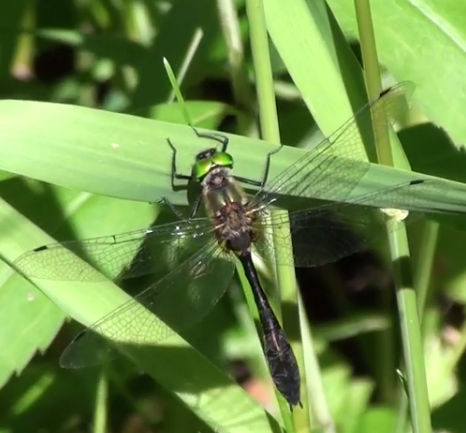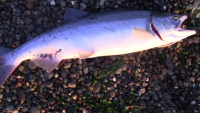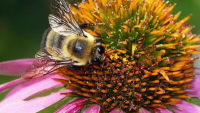Endangered Hine’s Emerald Dragonflies Raised In Captivity Freed In Illinois
| Quadey Humile | | Jul 18, 2015 05:18 AM EDT |
(Photo : Youtube) A species of federally endangered dragonflies raised in a South Dakota laboratory over the past several years are being freed into a forest preserve this week in Illinois.
A species of federally endangered dragonflies raised in a South Dakota laboratory over the past several years are being freed into a forest preserve this week in Illinois.
The Hine's emerald dragonflies, which for decades were believed to be extinct, were nurtured in captivity for the past four to five years after eggs were obtained from a dragonfly in southwestern Wisconsin, wilx.com reported.
Like Us on Facebook
Of the 20 dragonflies that could be released, three have already been freed so far into the wild. "We are trying to maximize their survivorship in captivity," Daniel Soluk, a professor at the University of South Dakota and the project leader, said
According to Soluk, only a few dragonflies survive to become adults (probably 10 of 1,000). By growing them in the lab, the insect's chance of survival is increased in such a way that 100 or even 200 from the same group reach "all the way to where they'd be ready to emerge into adulthood."
First discovered in Ohio in the mid-1990s, the Hine's emerald dragonflies were believed by scientists to have been extinct. Fortunately in 1988, one adult specimen was found in the Des Plaines River Valley, southwest of Chicago.
In 1995, the insect was listed as a federally endangered species and presently found in Michigan, Missouri, Wisconsin and Illinois, as per Sioux City Journal.com.
A female dragonfly lay eggs by plunging the tip of its body into shallow water. Nymphs or immature dragonflies, usually hatch from the eggs in the spring and live underwater for approximately four years. After a time, they come out of the water and shed their skin to become flying adults. The adult dragonflies has only about five weeks to live between June and August.
Endangered species coordinator at the U.S. Fish and Wildlife Service's Chicago Ecological Services Field Office Kristopher Lah said around 80 to 320 Hine's emerald larvae survive to adulthood in Illinois annually, SFGATE has learned.
The environmental group Nature Conservancy has endeavored to protect the Hine's emerald dragonflies for years in Door County, Wisconsin, where wetlands and coastal springs provide a lush habitat for the insects.
"It's something that we value because it's beautiful or it has some intrinsic value that we just want to protect. Some species, what is their value? A small butterfly doesn't really have any economic value and probably could go extinct and we'd never even know it. But I think there's an obligation to our future generations of people that we try to preserve the Earth in at least as good a condition as we found it," team ecologist Mike Grimm said.
©2015 Chinatopix All rights reserved. Do not reproduce without permission
EDITOR'S PICKS
-

Did the Trump administration just announce plans for a trade war with ‘hostile’ China and Russia?
-

US Senate passes Taiwan travel bill slammed by China
-

As Yan Sihong’s family grieves, here are other Chinese students who went missing abroad. Some have never been found
-

Beijing blasts Western critics who ‘smear China’ with the term sharp power
-

China Envoy Seeks to Defuse Tensions With U.S. as a Trade War Brews
-

Singapore's Deputy PM Provides Bitcoin Vote of Confidence Amid China's Blanket Bans
-

China warns investors over risks in overseas virtual currency trading
-

Chinese government most trustworthy: survey
-

Kashima Antlers On Course For Back-To-Back Titles
MOST POPULAR
LATEST NEWS
Zhou Yongkang: China's Former Security Chief Sentenced to Life in Prison

China's former Chief of the Ministry of Public Security, Zhou Yongkang, has been given a life sentence after he was found guilty of abusing his office, bribery and deliberately ... Full Article
TRENDING STORY

China Pork Prices Expected to Stabilize As The Supplies Recover

Elephone P9000 Smartphone is now on Sale on Amazon India

There's a Big Chance Cliffhangers Won't Still Be Resolved When Grey's Anatomy Season 13 Returns

Supreme Court Ruled on Samsung vs Apple Dispute for Patent Infringement

Microsoft Surface Pro 5 Rumors and Release Date: What is the Latest?














